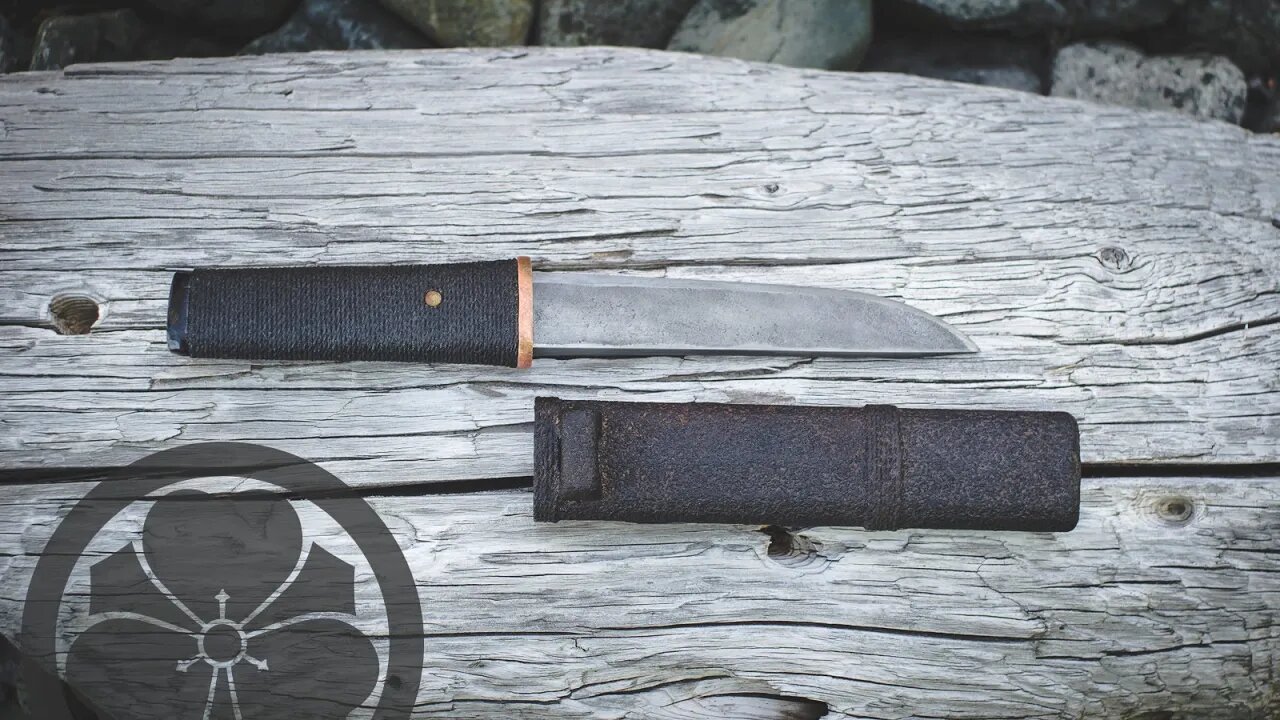Premium Only Content

SOTW #14 - Tools for Satoyama Project - Mountain Kotanto
An introduction to the Tools for Satoyama project with an overview of the process for making a Mountain Kotanto. More detailed videos of the procedure to follow, total build time was about 40 hours over 3 months...forging TimeWarp: https://youtu.be/IXvVUHmsnaA
More about the process of making this knife here: http://islandblacksmith.ca/2016/08/process-making-the-mountain-kotanto/
more about the project:
Satoyama are the managed forest areas that border the cultivated fields and the mountain wilds in Japan. Historically they provided soil nutrients, firewood, edible plants, mushrooms, fish, and game, and supported local industries such as farming, timber construction, and charcoal making. Balancing the interaction of wetlands, streams, forests, and fields is an important component of the satoyama landscape and allows for sustainable use of the rich resources they offer.
The Tools for Satoyama project is inspired by this mutually beneficial interaction between humans and the natural world, a robust way of life that sustained both for centuries. Among the goals of the project are contributing to the growing awareness of the satoyama concept, sustainable practices, thoughtful approaches to intentional living, and related historical learning.
The four styles of kotanto knives designed for the project are named for the four main areas found within the satoyama landscape: stream, field, forest, and mountain. In addition, the forest and mountain models also come in a full sized tanto configuration. Some of the core characteristics of the knives produced for this project are the reclaimed and natural source materials, use of traditional techniques, and a humble and simple style of carving and finishing.
A clay tempered blade hand forged in a charcoal fire, water quenched with clay, sharpened with waterstones, and finished simply and humbly in the age-old style of farming and foresting tools traditionally used in managing satoyama lands.
Read more about satoyama: http://islandblacksmith.ca/2016/03/tools-for-satoyama/
_________
About this knife:
Forged from a reclaimed harrow tooth, the blade profile of the mountain style kotanto is based on a kamakura sword and has more pronounced belly with slight drop point. The temper of this high carbon steel blade has been left relatively hard in order to hold a keen edge for tasks such as wood carving and hand work. This particular combination of steel and heat treatment is well suited to users who require a good edge and are willing to take care of it.
The tang is constructed in a similar manner to a Japanese sword requiring only a single bamboo peg to hold the knife assembly together. In addition to the sense of beautiful simplicity, this design allows the knife to be taken apart for cleaning, polishing, detailed cutting tasks, or major resharpening work.
The handle and scabbard are carved from local Nootka Cypress and finished with natural urushi lacquer. The handle is wrapped with cotton cord and then lacquered and the scabbard is finished with traditional ishimeji (stone texture) made with urushi and crushed tea leaves. A forged copper guard and removable peg carved from Bamboo complete the handle.
The blade is just under 5.75″ long and the overall length is about 10.25″. The spine at the munemachi is about 5mm thick.
Specifications
Nagasa (blade length): 144mm
Motokasane (blade thickness): 5mm
Motohaba (blade width): 30mm
Sori (curve): uchizori
Nakago (tang): 102mm
Tsuka (handle): 110mm
Koshirae (overall): 285mm
Katachi (geometry): hira-zukuri, kaku-mune
Hamon (edge pattern): suguha
Boshi (tip pattern): maru
Nakago (tang): futsu, kuri-jiri, one mekugi-ana, signed near the tip
Mei (signature): hot stamped katabami-ken kamon
Koshirae (mounting): satoyama hamidashi style, issaku
Materials: reclaimed harrow tooth steel, copper electrical washer, Nootka Cypress, Maple, cotton cord, natural urushi lacquer, tea leaves, Bamboo
design your own knife here: http://islandblacksmith.ca/design-your-own-knife-tools-for-satoyama/
-
 LIVE
LIVE
Right Side Broadcasting Network
9 days agoLIVE: President Donald J. Trump Keynotes TPUSA’s AmFest 2024 Conference - 12/22/24
19,299 watching -
 4:31
4:31
CoachTY
15 hours ago $8.95 earnedCOINBASE AND DESCI !!!!
45.2K8 -
 10:02
10:02
MichaelBisping
14 hours agoBISPING: "Was FURY ROBBED?!" | Oleksandr Usyk vs Tyson Fury 2 INSTANT REACTION
2.66K7 -
 8:08
8:08
Guns & Gadgets 2nd Amendment News
2 days ago16 States Join Forces To Sue Firearm Manufacturers Out of Business - 1st Target = GLOCK
59.5K57 -
 10:17
10:17
Dermatologist Dr. Dustin Portela
1 day ago $10.07 earnedOlay Cleansing Melts: Dermatologist's Honest Review
69.8K1 -
 1:02:20
1:02:20
Trumpet Daily
2 days ago $28.93 earnedObama’s Fake World Comes Crashing Down - Trumpet Daily | Dec. 20, 2024
35.1K37 -
 6:29
6:29
BIG NEM
22 hours agoCultivating God Mode: Ancient Taoist NoFap Practices
36.9K9 -
 30:53
30:53
Uncommon Sense In Current Times
1 day ago $8.86 earned"Pardon or Peril? How Biden’s Clemency Actions Could Backfire"
56.3K4 -
 40:01
40:01
CarlCrusher
20 hours agoSkinwalker Encounters in the Haunted Canyons of Magic Mesa - ep 4
52.4K2 -
 59:44
59:44
PMG
1 day ago $5.74 earned"BETRAYAL - Johnson's New Spending Bill EXPANDS COVID Plandemic Powers"
54.9K21